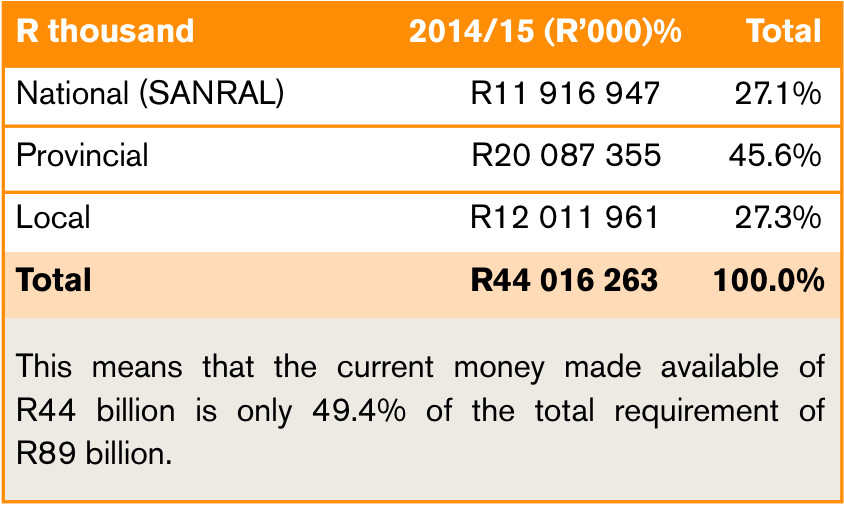People need roads but keeping up with demand is not easy. Since the 1990s, SANRAL’s budget from government has not been enough to start any road expansion or new road construction projects.
South Africa has the tenth largest road network in the world – 750 000 kilometres. Funding for the entire road infrastructure network will continue to be a challenge.
SANRAL is responsible for the national road network which is 21 403 km. Out of these, 18 283 km are non-toll roads and 3 120 are toll roads. The agency receives money to fund its work from the national fiscus for the maintenance of the national non-toll road network, but it is simply not enough.
Toll roads are self-funding through the toll fees collected.
The latest available information (2014) indicates:
• +/- current road backlog of R197 billion, with an annual need of R23.2 billion to the address the backlog over 10 years.
• +/- requirement of R65.8 billion per year to just keep the roads as they are.
• A total need per year of R89 billion.
Backlog is the amount of investment the economy needs to catch up with society’s needs.
Spending on roads in the last year, across all levels of government was R44 billion.
What is a fuel levy?
A fuel levy is a flat rate tax on petrol and diesel. If you don’t buy fuel, you don’t pay the fuel levy. The annual income collected from road users in the last year was:
What this shows is that what is collected from road users is given back to them in full, so no additional money is available for allocation. Last year, SANRAL received R11.9 billion and this year it is R12.5 billion.



